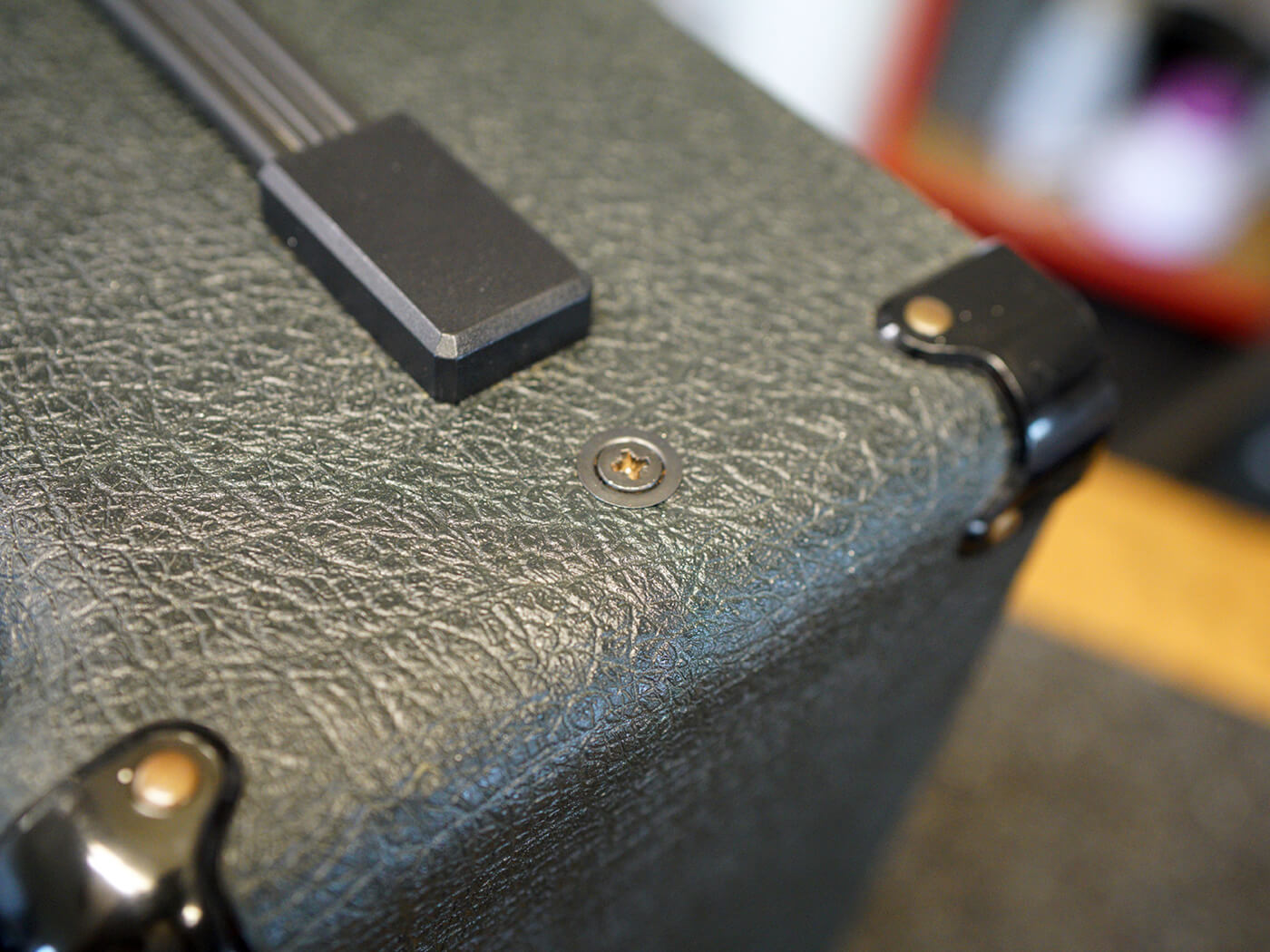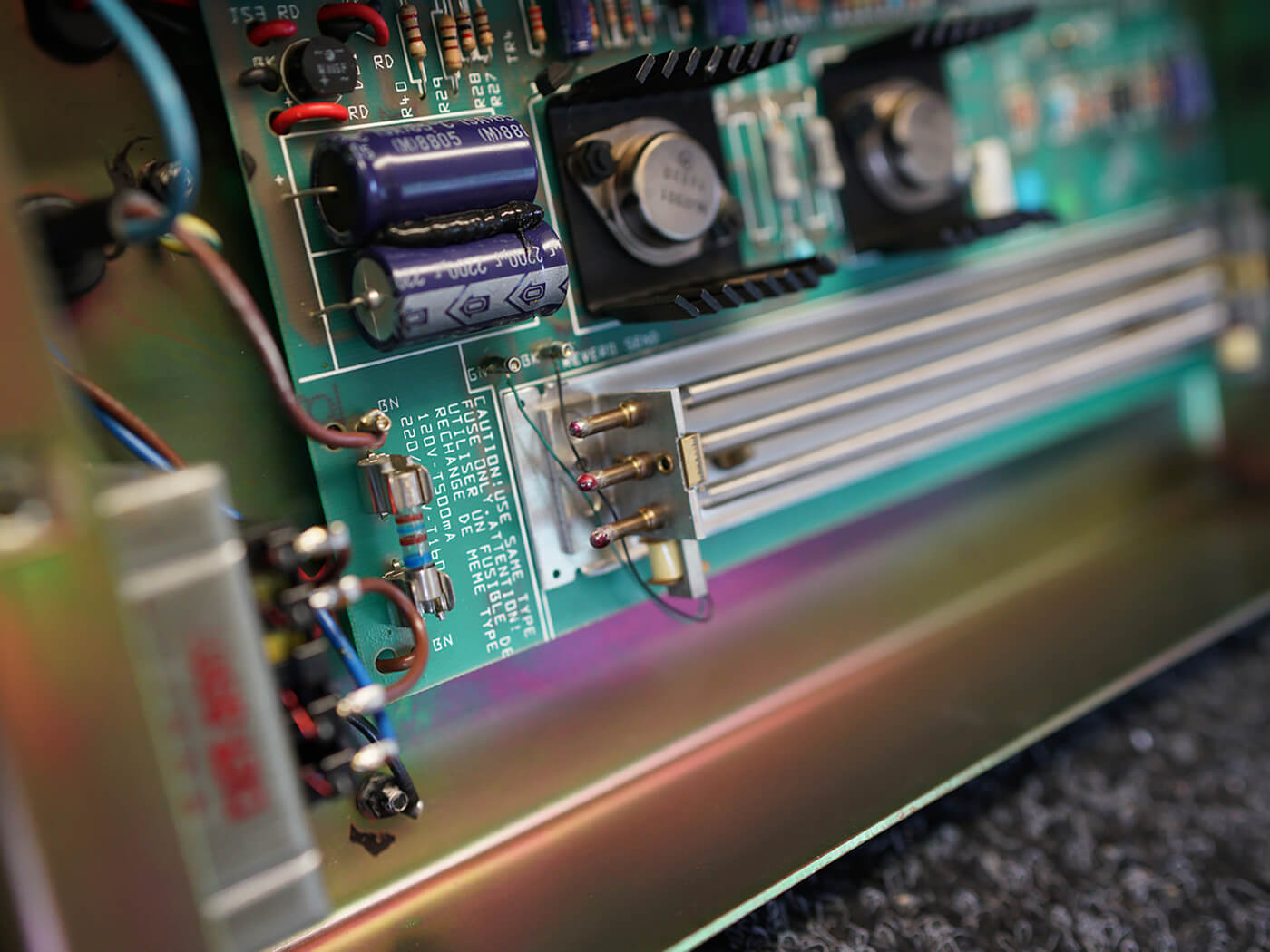Related Tags
Amp FAQ: Can you recommend an affordable solid-state amp for home use?
Rift main man Chris Fantana checks out a cheap and cheerful 1980s solid-state amp that may be ideal for the modern era.

This Kalamazoo-made Epiphone Century is a surprisingly good match for the Reverb 12
Nigel asks: Hi, Chris. As someone who makes and repairs valve amps, are you strictly all about hot glass? I’m looking for something cheap and cheerful that doesn’t upset the neighbours during this period of lockdown and wondered if there are any solid-state amps you’d recommend.
Chris Fantana Great question, Nigel. It just so happens that an amplifier crossed my workbench this month that could be perfect for your requirements.
It’s no secret that I’m a huge valve-amplifier enthusiast – for such ‘ancient’ technology, valve amps can still cause the jaws of audience members to drop the world over. I could wax lyrical about these things for an unnecessarily long time, and have been known to sing the praises of thermionic vacuum tubes into the small hours of the morning to the editor of this very magazine. Valve circuits aside, however, there is another amplifier that stirs up in me those same emotions – a solid-state one. “Heresy!” you shout. I know, I know, but bear with me.

Introduced in the early-1980s, the Marshall Lead 12 1×10 combo model 5005 was the smallest of a new solid-state line-up that included the 5002 Lead 20-watt 1×10 and the 5010 Master Lead 30-watt 1×12 combo. The Lead 12 was later available in head format too, model number 3005. It didn’t have the JCM800 logo but it was included in the same catalogue, manufactured in the same period and sported the same look and style.

The reason I love these amps is simple: they truly sound like valve amplifiers. I’ve not come across another solid-state amplifier that has managed this in the way the Lead 12 does. Clearly, I’m not the only one who realised this; ZZ Top’s Billy Gibbons used one to sensational effect on the track My Head’s In Mississippi. The tone is that of a classic cranked Marshall without any hint of fizz and that’s no mean feat considering that the amp is loaded with a single 10-inch Celestion G10D-25 speaker.

In 1984, Marshall added spring reverb to the model and gave it the moniker Reverb 12, model 5205. This is the amp that landed on my bench this week. Despite being several decades old, it’s still going strong and only requires some TLC and preventative maintenance to keep it going. If you happened to read my column on amplifier servicing a few months back, you’ll be familiar with the process.
The customer complained of a few scratchy pots, a few crackles, and buzzes here and there. On the whole, however, the amp is functional. Removing the 0.8mm steel chassis from the cabinet is simple, as there are just two machine screws holding it in place. Sliding it out if the cabinet reveals a well-designed and smoothly manufactured circuit board with all of the components top-side, with the traces located underneath.

The mains transformer sits off the board on the right-hand side of the chassis, along with the power switch and associated power wiring. It’s hard to miss the three-spring reverb unit located on the circuit board, it’s (comparatively) huge and runs almost the length of the thing. The potentiometers are sturdy Taiwanese-made 24mm units from Alpha and are easy to clean and, if required, replace. After the service is completed, it’s time to button it all back up and give the amp a play test.
Plugging in a Les Paul with the bridge pickup selected and the gain turned up to three o’clock ushers in a classic 1980s rock tone that wanders ever so close to that found on Van Halen’s debut. Turn it up a little more, push the mids past eight and we’re in Thin Lizzy territory. The master volume is fantastic and it’s not difficult to eke out brilliant tones even at bedroom-friendly volumes, a vanishingly rare and increasingly prized amp trait these days.

Here’s something I didn’t know until now: the Reverb 12 is also a fantastic jazz amplifier. Turn the gain down to three, set the master to full, bass and mids on two, and the treble to wherever suits, and with my 1960 Epiphone Century at least, I can get anything from Wes Montgomery to Joe Pass. Turn up the mids a smidge more and I could Django all night at the local Hot Club.
There we go then: the small amplifier that can do it all. I’m so enamoured with the Reverb 12’s jazz tone that I’ve just purchased one for myself from my favourite internet auction site. For only £120 delivered, I’d be mad to say no.
Visit riftamps.com for more on Rift’s range of British-built boutique amp.
